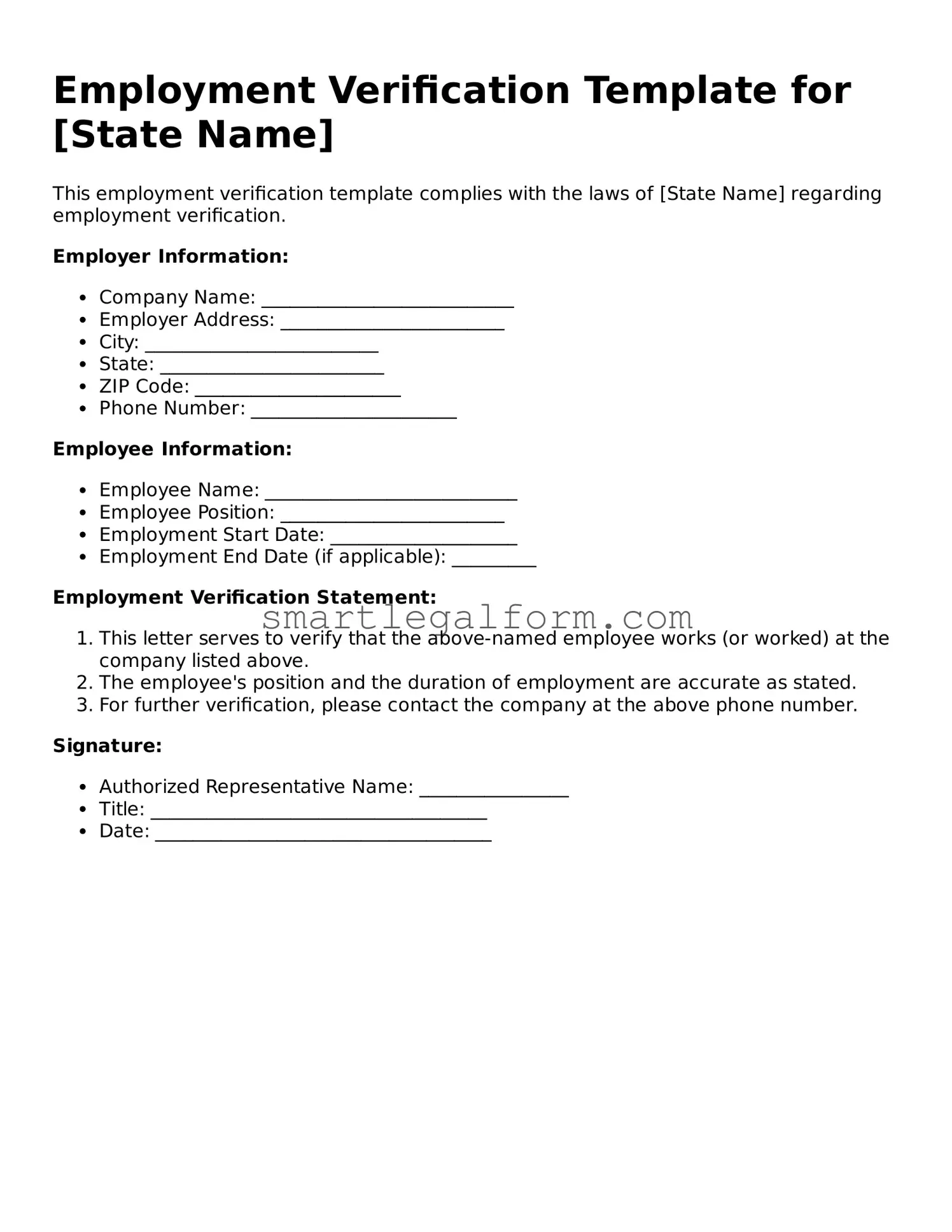Attorney-Approved Employment Verification Form
The Employment Verification form is a crucial document used by employers to confirm an individual's employment status, job title, and duration of employment. This form plays a significant role in various processes, such as background checks and loan applications, ensuring that the information provided by job applicants is accurate and trustworthy. Understanding how to properly fill out this form can streamline verification and enhance the hiring process.
Ready to fill out the Employment Verification form? Click the button below to get started!
Fill Out Your Form Online
